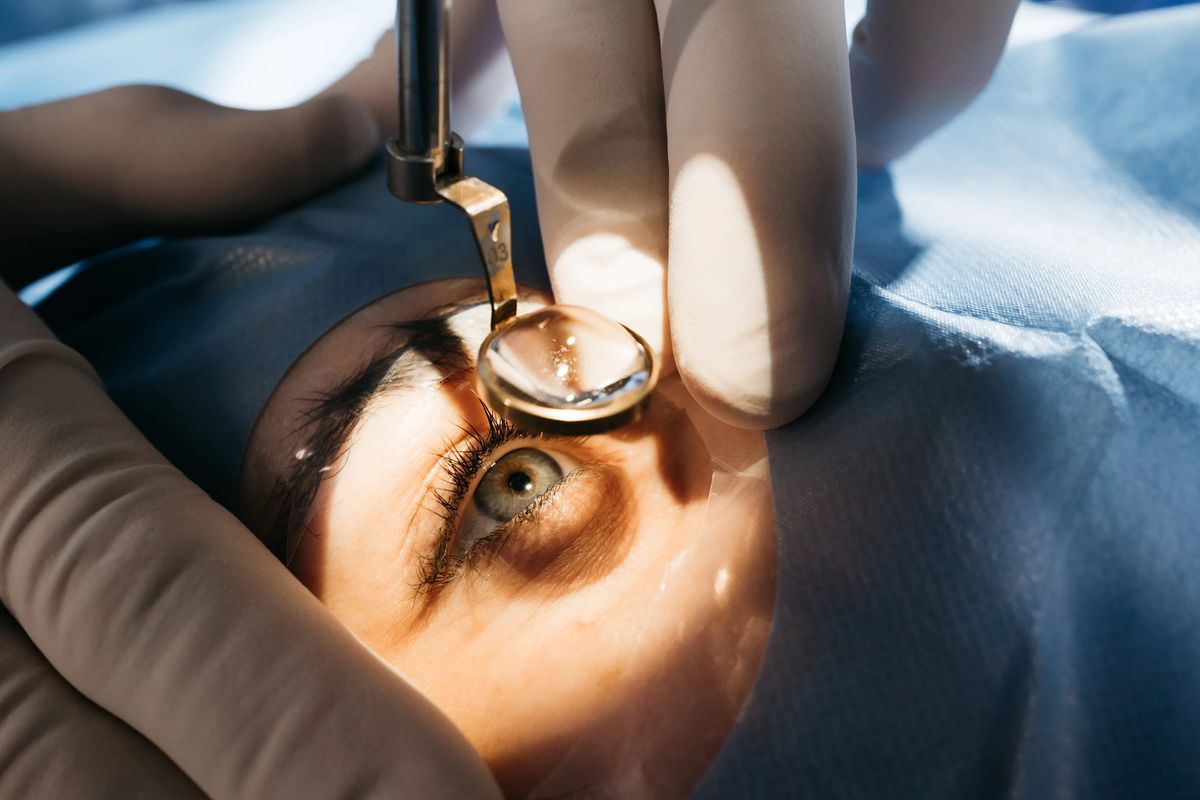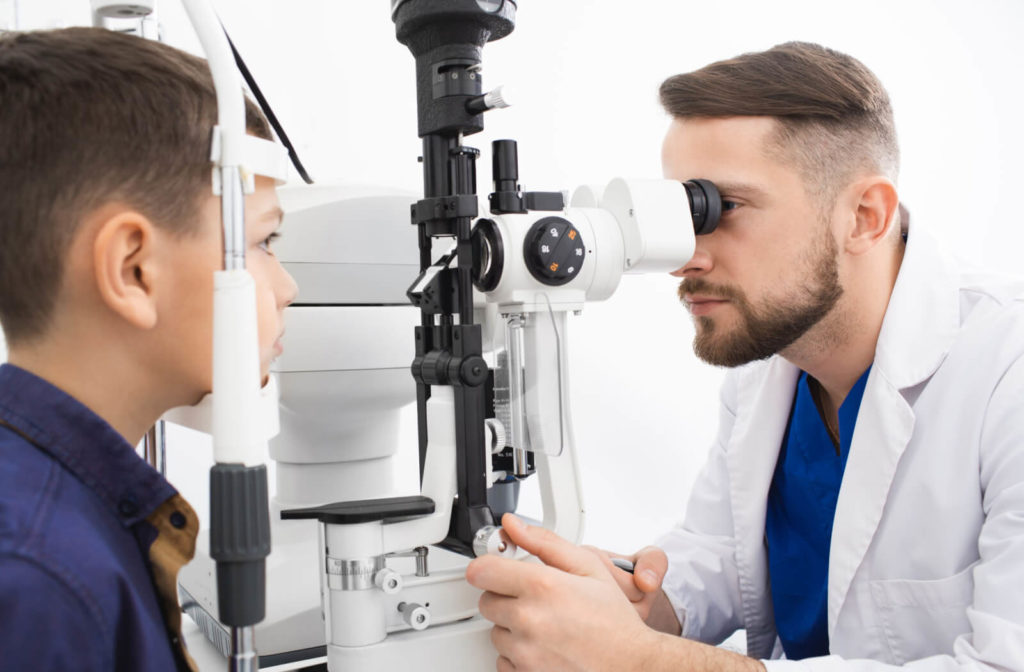As exam season approaches, students face a concerning risk of declining vision. The Ho Chi Minh City Center for Disease Control (HCDC) has just introduced a 7-step eye health plan to help students maintain stable vision for effective and safe learning.

A student undergoing a vision test at Ho Chi Minh City Eye Hospital – Photo: THUY DUONG
On May 31, the Ho Chi Minh City Center for Disease Control (HCDC) reported that today’s students often study intensively—using books and digital devices for long periods, under poor lighting, and at improper distances between their eyes and study materials—leading to eye conditions such as dry eyes, eye strain, and declining school-age vision.
HCDC Recommends a 7-Step Journey to Protect Children’s Eyes
Stage 1: Discovering the “Treasure” of Eye-Friendly Nutrition
Encourage children to “gather” eye-nourishing foods like carrots, sweet potatoes, dark leafy greens, oranges, tangerines, and salmon. Drinking enough water also helps prevent dry eyes. A well-nourished eye is better equipped to take on daily challenges.
Stage 2: Overcoming the “Eye Strain Challenge”
Apply the “20-20-20 rule”: every 20 minutes of study, look at something 20 feet (about 6 meters) away for 20 seconds. Let the eyes fully relax by closing them and counting backward from 10 to 1, or gently massaging the eye area. These simple actions help relieve tension and enhance focus.
Stage 3: Building the “Ideal Lighting Base”
Set up a study space with proper lighting—preferably natural light or soft yellow desk lamps. Avoid overly bright or dim light and reduce exposure to blue light from digital screens. Adjust screen brightness to protect the eyes from harmful light and support more effective learning.
Stage 4: Mastering the “Superhero” Posture
Sit upright to avoid neck and eye fatigue. Keep a distance of 30–40 cm between the eyes and books. This posture not only promotes eye health but also builds confidence and poise for tackling exams.
Stage 5: Collecting the “Golden Sleep” Power-Up
Sleep 7–8 hours per night to “recharge” the eyes. Avoid electronic devices before bedtime to ensure quality rest. Well-rested eyes recover fully and are ready for a productive day of learning.
Stage 6: Meeting the Eye Doctor
“Upgrade” vision by self-checking with an eye chart at school and asking parents for a comprehensive eye exam every 6 months. Regular checkups help detect problems early and protect this “vital weapon.”
Stage 7: Crafting a “Shield” Against Blue Light
Use blue light blocking glasses when using electronic devices. Limit screen time, especially close-range viewing or prolonged gaming and TV watching. These actions safeguard the eyes from digital strain.
Myopia: A Growing Public Health Concern
Dr. Nguyen Thi Hong Hanh, MD, Level II Specialist and Deputy Head of Pediatric Ophthalmology at the Ho Chi Minh City Eye Hospital, emphasized that myopia is an escalating issue with increasing global prevalence.
According to the WHO, by 2050, an estimated 4.758 billion people (50% of the global population) will be myopic, with around 938 million (10%) having high myopia.
East Asian countries, including Vietnam, report particularly high rates. Myopia is most common among school-age children—typically from Grade 1 to Grade 12 (ages 6 to 17). Research shows the earlier myopia develops, the higher the risk of progression.
There are several risk factors for childhood myopia. The most significant is genetics. The second involves near-work activities—such as prolonged studying or excessive screen use—which strain the eyes and contribute to myopia onset and progression.
Other contributing factors include limited outdoor activity and suboptimal classroom lighting or poor visual hygiene environments that lack adequate illumination for young students.

 vi
vi 31-May-2025
31-May-2025











 0916.741.763
0916.741.763 Appointment
Appointment